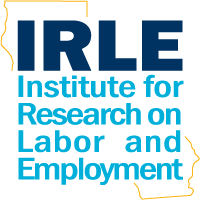Overview
Social Security was originally created to provide a basic floor for retirees’ living standards. However, many Americans – and in particular an increasing number of Baby Boomers – rely on Social Security as their major source of retirement income. There is a gap between what Social Security can provide at current funding levels, and what Americans expect it to provide. Many Baby Boomers appear at risk of suffering a major decline in their living standard in retirement. Since the government is not likely to expand Social Security in the short term, Baby Boomers should not be discouraged from increasing their lifetime earnings by working harder and longer. In a recent paper, 1 my colleagues and I measure the work disincentives confronted by people aged 50-79, based on an evaluation of the entire array of explicit federal and state taxes and implicit taxes arising from the loss of benefits as one earns more. We find that these work disincentives are much higher than suggested by previous research. Working longer can raise older workers’ living standards, but those additional earnings are effectively taxed at a high rate (typically between 40-60%). Reducing these work disincentives could help increase the lifetime earnings of retirees and thereby reduce poverty rates among the elderly.
Introduction
Baby Boomers’ retirement is one of the biggest challenges Social Security faces. The number of retirees is unprecedented in the US: since 2010, about 4 million Baby Boomers have retired each year, i.e., about 10,000 each day.
Many, if not most, Baby Boomers appear at risk of suffering a major decline in their living standard upon retirement. Although the program was originally designed to provide only a basic floor to retired workers’ living standards, Social Security now provides at least 90% of financial support to over one-third of elderly households. More than 60% of beneficiaries receive at least half of their income from Social Security.2 This is not because Social Security is particularly generous, but rather because many Americans fail to save for their retirement. Baby Boomers may have an even harder time saving enough for retirement compared to previous generations. They will live longer and face lower real returns on their savings. Social Security is already 32% underfunded and it is unlikely that the government will provide higher Social Security benefits in the future.3
In this context, Baby Boomers must look to their own devices to rescue their retirements; namely by working harder and delaying retirement. However, our research finds that government-imposed work disincentives hamper the ability of the elderly to increase living standards by working longer. These work disincentives are the result of the hodgepodge of our fiscal system, and probably poorly understood both by the elderly themselves and by policymakers.
Uncle Sam discourages work by the elderly
In a recent paper, my co-authors and I investigate whether Uncle Sam induces the elderly to retire. To answer this question, we compute the remaining lifetime marginal net tax rates for people aged 50-79, using data from the 2013 Federal Reserve Survey of Consumer Finances (SCF) and The Fiscal Analyzer (TFA) program.4 Our approach is innovative in two ways:
- First, the marginal tax rates we compute take into account all major federal and state tax-transfer programs – roughly 30 programs that have complex interactions with each other. These include explicit federal and state taxes (such as the federal corporate income tax, personal federal and state income taxes, payroll taxes, state sales taxes, and estate taxes) and the implicit taxes arising from benefit reductions as one earns more (such as Social Security disability and retirement, Food Stamps, Medicare, and Medicaid).
- Second, the lifetime marginal net tax rates we compute compare the increase in the expected present value of the extra spending by a household over the rest of its lifetime to the expected present value of future lifetime earnings.5 For example, if earning an extra $1,000 raises a household’s expected present value of lifetime spending by $400, the household faces a marginal net tax rate of 60%. Traditionally, marginal tax calculations relate this year’s extra taxes to this year’s extra income, which fails to properly capture the work disincentives the elderly face. Current-year marginal net tax rates understate the work disincentives faced by the elderly because they incorrectly assume that all additional earnings earned are spent in the same year as they are earned.6
As expected, we find that working longer could raise older workers’ living standards. If all those 50 and over now working were to continue working for an additional five years, they could increase their living standards by 5 to 8%. For those aged 60 to 64, working five more years could increase living standards by 5% for the wealthiest households (the top 1%) and by 15% for those in the bottom 20%.7
However, these net gains from working longer are significantly reduced by benefit reductions and taxes. Of particular concern are Medicaid and Social Security, which has a complex Earnings Test and clawback of disability benefits. These provisions and the interactions with other federal and state taxes and benefits create strong work disincentives.
Work disincentives are largest for those at the bottom and top ends of the resource distribution, particularly for significant increases in earnings. As shown in Figure 1, an additional $20,000 in annual earnings for the poorest 20% of households produces a marginal lifetime net tax rate over 80% for those between 60 and 64 (an additional $10,000 would be taxed at only 48% for these same heads of households). This is at odds with what optimal tax theory recommends: high marginal tax rates may drive large numbers of older workers out of the labor force.
FIGURE 1 Median Marginal Lifetime Net Tax Rates by Quintile, Ages 60-64, 65-69 and 70-74, Arising from a $20,000 Increase in Earnings for One Year

Source: Auerbach, Kotlikoff, Koehler and Yu (2016), from Figure 3 p.65.8
The fiscal system for the elderly is opaque
This complex interaction of tax-transfer programs makes it difficult for workers to make effective decisions about maximizing their financial resources during retirement. The marginal net tax rates on additional earnings are unclear and do not treat similar households equally:
- The impact of federal and state tax and benefit rules on net earnings for the elderly are opaque for the households themselves. Many workers have difficulty estimating when it’s most beneficial to start collecting Social Security benefits, for example. Their actual income after all taxes and transfers depends on a complex set of program interactions. Since work and retirement decisions depend on how people perceive their effective tax rates, it is important to make the fiscal system transparent.
- The fiscal system treats similar people differently. For example, we find that poor households of the same age are taxed quite differently. About one fifth of elderly in the bottom 20% face a marginal net tax rate above 60%, but a quarter of elderly in the same income group face a marginal net tax rate below 20%.
Conclusion
Working harder and longer could significantly increase the ability of Baby Boomers to finance consumption in old age. Our study shows that the complex interaction of program rules affecting taxation, benefit amounts, and program eligibility, in particular for Social Security and Medicare, significantly disincentivizes work by effectively taxing their additional earnings at high rates – up to 80% for the poorest households. Policymakers can use our research to better understand the level and spread of the work disincentives created by our fiscal system.
Endnotes
- Auerbach, Alan, Laurence J. Kotlikoff, Darryl Koehler and Manni Yu. 2016. “Is Uncle Sam Inducing the Elderly to Retire?,” Working Paper.
- https://www.ssa.gov/policy/docs/chartbooks/fast_facts/2016/fast_facts16.html#pagei
- Auerbach, Alan, and William Gale. 2016. “Once More Unto the Breach: The Deteriorating Fiscal Outlook”, Tax Notes, 150 (11).
- For more details, see Appendix A in Auerbach, Alan, Laurence J. Kotlikoff and Darryl Koehler. 2016. “U.S. Inequality, Fiscal Progressivity, and Work Disincentives”, Working Paper.
- More precisely, we use a simulation tool to calculate the net marginal tax rates. It is called The Fiscal Analyzer (TFA). It calculates future consumption, taxes and transfers at the household level. It’s a life-cycle consumption-smoothing program specially designed to incorporate all major federal and state fiscal programs. For more details, see Appendix A in Auerbach, Alan, Laurence J. Kotlikoff and Darryl Koehler. 2016. “U.S. Inequality, Fiscal Progressivity, and Work Disincentives”, Working Paper.
- We compare current and remaining lifetime marginal net tax rates in section E of our article (op. cit.), p.40.
- Our estimates of the expected gains from working an additional five years are considerably lower than in Butrica, Barbara A., Karen E. Smith and C. Eugene Steuerle. 2006. “Working for a Good Retirement”, CRR Working Paper 2006-8. This is partly due to the fact that Butrica et al. (2006) are considering gross income, not net income or discretionary spending. For a discussion of other factors that could help reconcile the two findings, see Auerbach, Alan, Laurence J. Kotlikoff, Darryl Koehler and Manni Yu (2016), op. cit., p.31-32.
- See the original Figure 3 in Auerbach, Alan, Laurence J. Kotlikoff, Darryl Koehler and Manni Yu (2016), op. cit. to get all age categories above 50.

